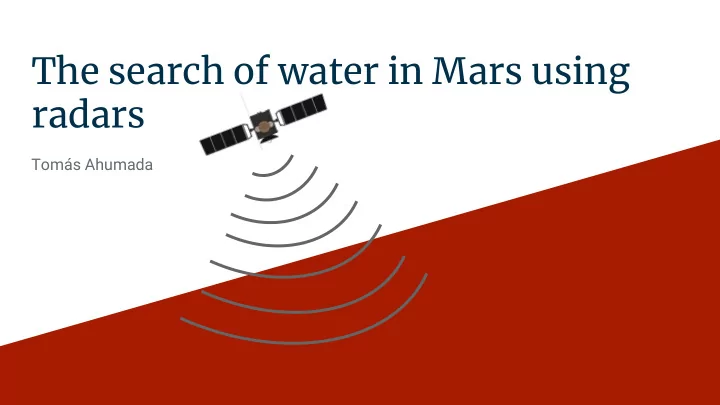

The search of water in Mars using radars Tomás Ahumada
Motivation ● First publication ● Following publications ● How to do it?
ESA The Satellite ● Mars Explorer ● MARSIS ● Radar specifics
Radargram ● Diagram to explain ● Permittivity
The data ● Data downloaded ● Signal to Noise ● Location of the footprints ● Radargrams
Radar Reduction Step 1: Decompress the level 1A data. sequence Step 2: Transform the data to power expresses in the units of dBm. Raw Telemetry data Step 3: Convert power to the antenna by correcting for system gain. The system gain is frequency Decompress + express in dBm dependent and data are corrected for variations in system gain over frequency via a lookup table Power - Gain Step 4: Divide by the bandwidth (10.9KHz) and antenna length squared; (20m2) Divide by bandwidth and antenna length squared V 2 /m 2 /Hz
Methods ● Image analysis ● Threshold detection per line ● Detection algorithm
Methods ● Image analysis ● Threshold detection per line ● Detection algorithm
Methods ● Image analysis ● Threshold detection per line ● Detection algorithm
Methods ● Image analysis ● Threshold detection per line ● Detection algorithm
Methods ● Image analysis ● Threshold detection per line ● Detection algorithm
Results ● Power spectra of layer features
Future work For the surface (s) ● Getting the permittivity ● Spatial comparison For the layer underground Porcello et al. 1974
Conclusions ● SNR constraints over MARSIS data ● Data management ● Determination of the composition of subsurface layers is based on the estimate of their dielectric properties. Carter et al. 2009
Recommend
More recommend